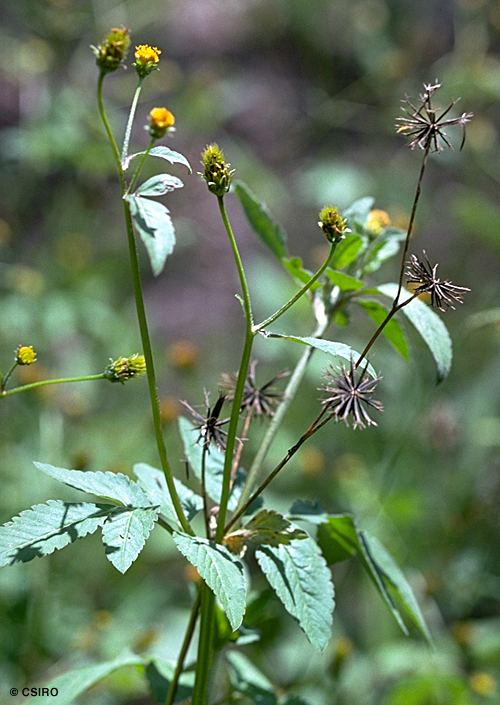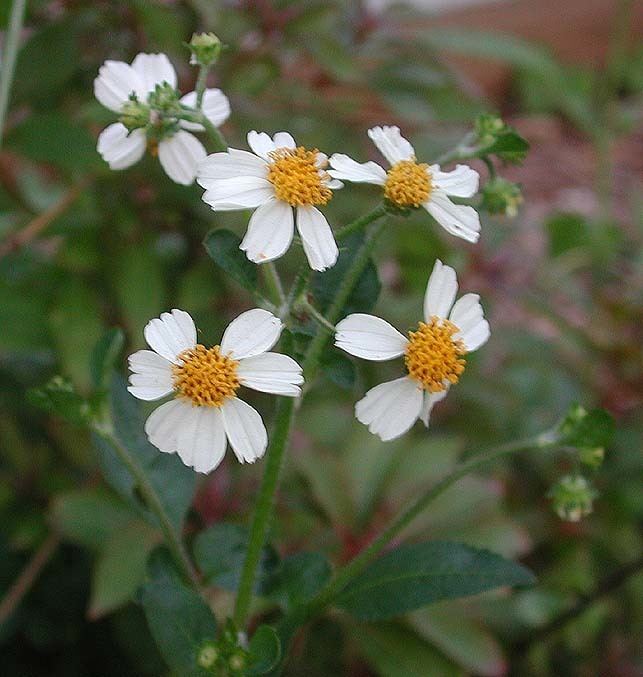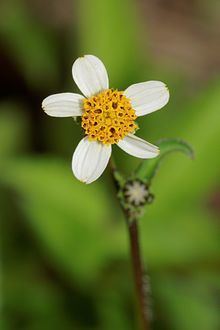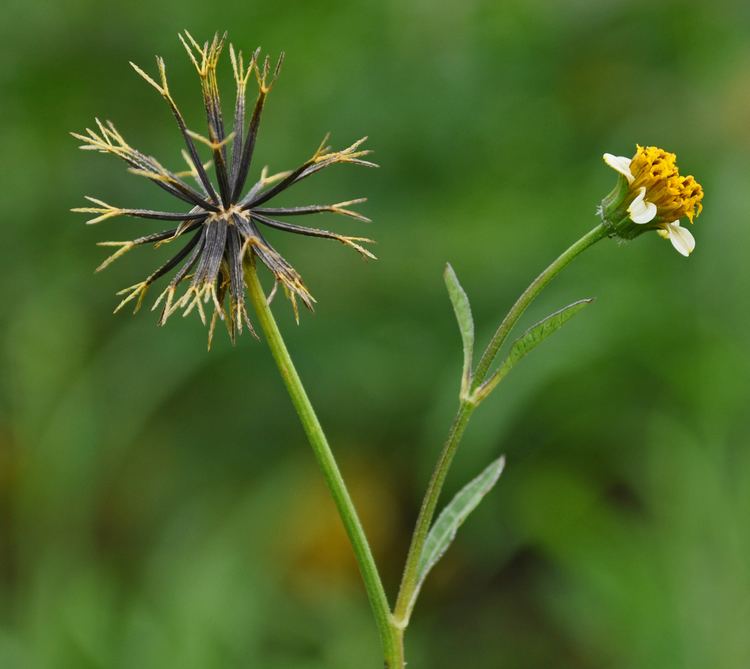Rank Species | Scientific name Bidens pilosa Higher classification Bidens | |
 | ||
Similar Bidens, Bidens alba, Daisy family, Ageratum conyzoides, Amaranthus viridis | ||
Bidens pilosa is a species of flowering plant in the aster family. It is native to the Americas but it is known widely as an introduced species of other regions, including Eurasia, Africa, Australia, and the Pacific Islands. It is a tall branched weed with thin yellow flowers that develop into a cluster of barbed seeds. Its many common names include black-jack, beggar-ticks, cobbler's pegs, and Spanish needle. The seeds are like short, stiff hairs. They get stuck in feathers, fur, or socks, etc. This bur is widespread throughout the warmer regions of the world. Its little black seeds hook onto clothes or horses and thereby the bur spreads itself around. It is susceptible to hand weeding if small enough, even then must be bagged, and thick mulches may prevent it from growing. Each seed has two to four barbed spines. A weed of gardens, woodlands, and waste areas, a person who brushes against it will end up covered in the burs and need to pick them off one by one. Although this plant is considered a weed in some parts of the world, in other parts it is a source of food or medicine. For example, it is reportedly widely eaten in Africa, and in Vietnam, during the Vietnam War soldiers adopted the herb as a vegetable, which lead to it being known as the "soldier vegetable".
Contents
- Bidens pilosa
- Bidens pilosa L Medicinal Uses of Bidens pilosa Spanish Needle Beggars Ticks
- Description
- Common names
- Traditional uses
- Chemistry
- References

Bidens pilosa
Bidens pilosa L. | Medicinal Uses of Bidens pilosa | Spanish Needle | Beggar's Ticks
Description

Bidens pilosa is an annual forb of gracile habit, growing up to 1.8 meters tall. It grows aggressively on disturbed land and often becomes weedy. The leaves are oppositely arranged and pinnate in form with three to five dentate, ovate-to-lanceolate leaflets. The petioles are slightly winged.

The plant may flower at any time of the year, but in temperate regions it blooms mainly in summer and autumn. Flowers are borne in small heads on relatively long peduncles. The heads bear about four or five broad white ray florets, surrounding many tubular yellow disc florets. The fruits are slightly curved, stiff, rough black rods, tetragonal in cross section, about 1 cm long, with typically two to three stiff, heavily barbed awns at their distal ends. The infructescences form stellate spherical burrs about one to two centimeters in diameter. The barbed awns catch onto fur or clothing, and can injure flesh. It is an effective means of seed dispersal by zoochory, as the seeds are transported by animals. This mechanism has helped the plant become a noxious weed in temperate and tropical regions.
Common names
This plant has many common names in different regions and languages, including:

Traditional uses

In traditional Chinese medicine, this plant is considered a medicinal herb, called xian feng cao (Chinese: 咸豐草).. In traditional Bafumbira medicine, this plant is applied on a fresh wound and is known to be a medicinal herb, called inyabalasanya.
Chemistry
Almost two hundred compounds have been isolated from B. pilosa, especially polyacetylenes and flavonoids. The plant contains the chalcone okanin and ethyl caffeate, a hydroxycinnamic acid.
Extracts of B. pilosa suppressed the growth of isolated adult T-cell leukemia cells in vitro.
